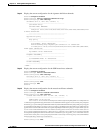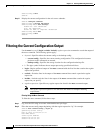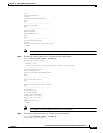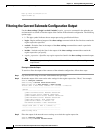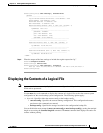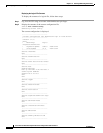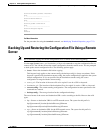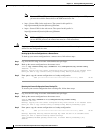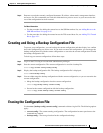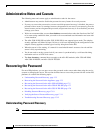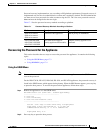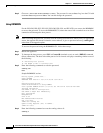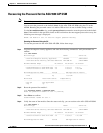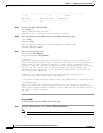
16-23
Cisco Intrusion Prevention System CLI Sensor Configuration Guide for IPS 7.1
OL-19892-01
Chapter 16 Working With Configuration Files
Creating and Using a Backup Configuration File
Step 4 Enter no to retain the currently configured hostname, IP address, subnet mask, management interface,
and access list. We recommend you retain this information to preserve access to your sensor after the
rest of the configuration has been restored.
For More Information
• For the procedure for adding the remote host to the SSH known host list, see Adding Hosts to the
SSH Known Hosts List, page 4-45.
• For the procedure for adding the remote host to the TLS trusted hosts list, see Adding TLS Trusted
Hosts, page 4-51.
Creating and Using a Backup Configuration File
To protect your configuration, you can back up the current configuration and then display it to confirm
that is the configuration you want to save. If you need to restore this configuration, you can merge the
backup configuration file with the current configuration or overwrite the current configuration file with
the backup configuration file.
To back up your current configuration, follow these steps:
Step 1 Log in to the CLI using an account with administrator privileges.
Step 2 Save the current configuration. The current configuration is saved in a backup file.
sensor# copy current-config backup-config
Step 3 Display the backup configuration file. The backup configuration file is displayed.
sensor# more backup-config
Step 4 You can either merge the backup configuration with the current configuration, or you can overwrite the
current configuration:
• Merge the backup configuration into the current configuration.
sensor# copy backup-config current-config
• Overwrite the current configuration with the backup configuration.
sensor# copy /erase backup-config current-config
Erasing the Configuration File
Use the erase {backup-config | current-config} command to delete a logical file. The following options
apply:
• current-config—The current running configuration. The configuration becomes persistent as the
commands are entered.
• backup-config—The storage location for the configuration backup.



